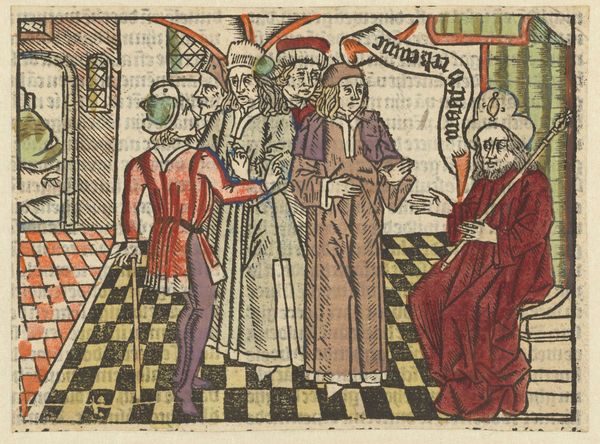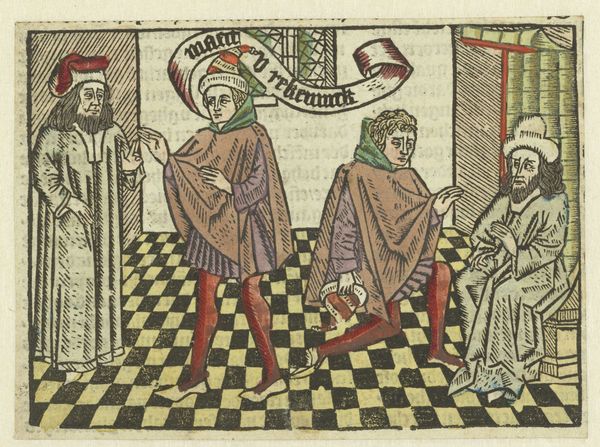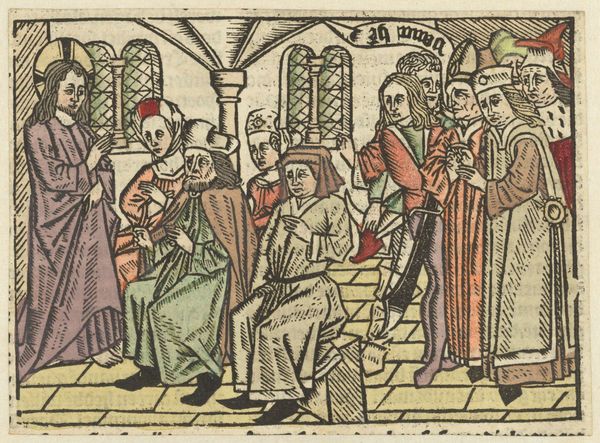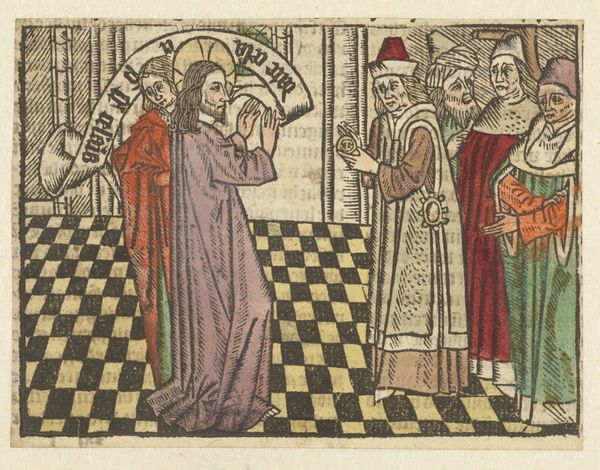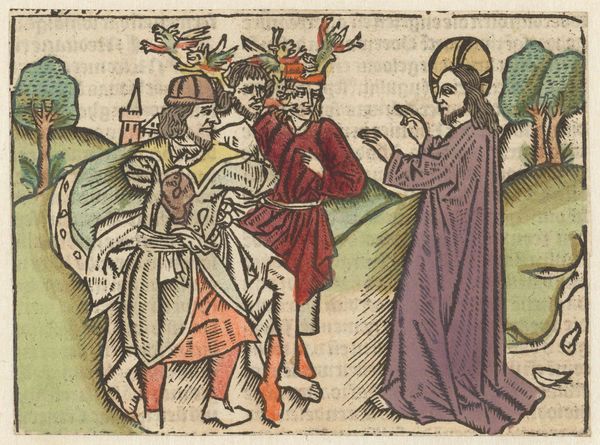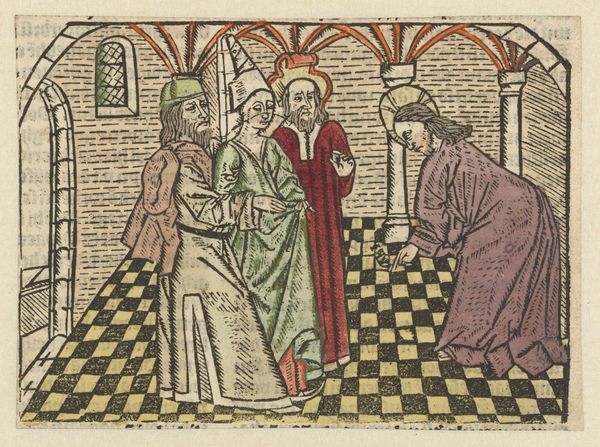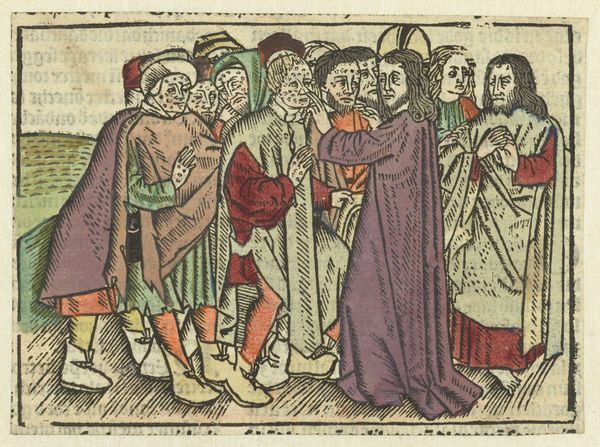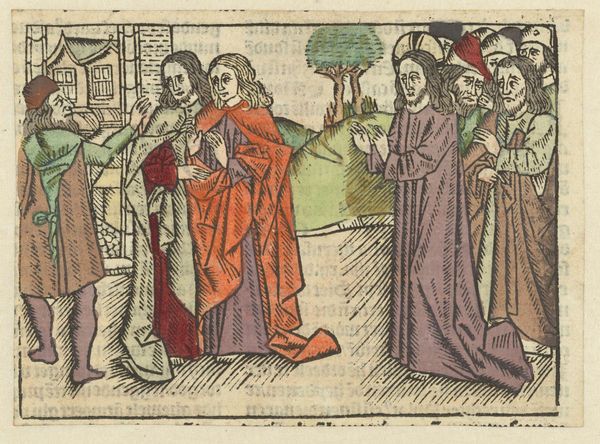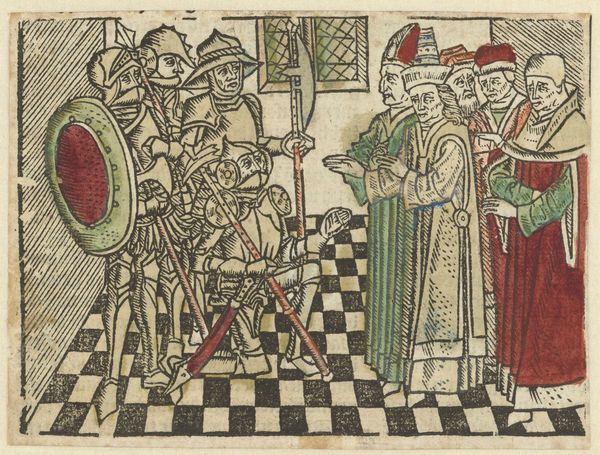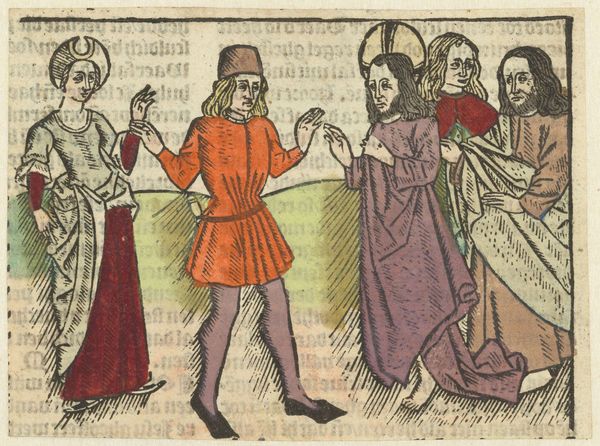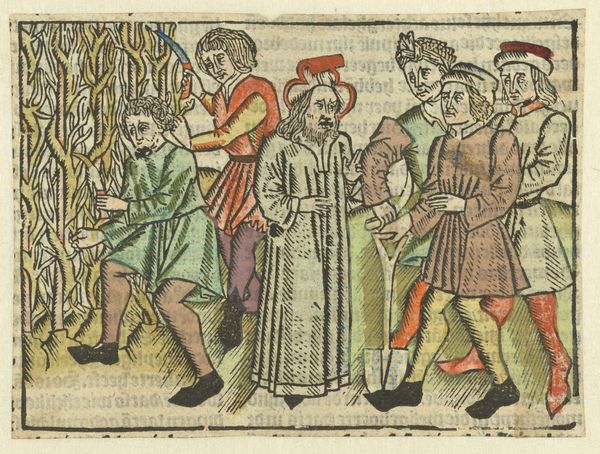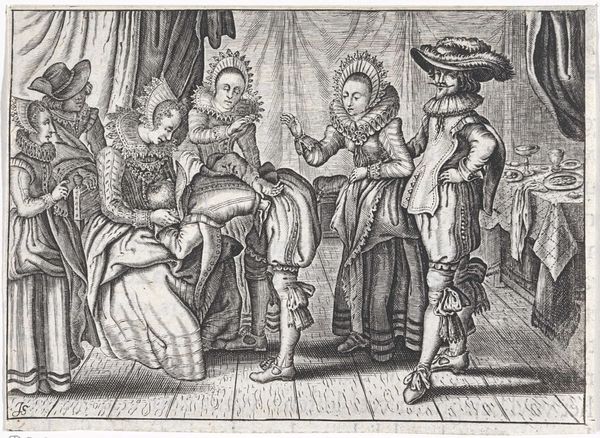
#
pen drawing
#
junji ito style
#
personal sketchbook
#
pen-ink sketch
#
pen work
#
sketchbook drawing
#
storyboard and sketchbook work
#
sketchbook art
#
coloring book page
#
doodle art
Dimensions: height 96 mm, width 131 mm
Copyright: Rijks Museum: Open Domain
Curator: This compelling piece is "Judas bij de hogepriesters om Christus te verraden," or "Judas with the High Priests to Betray Christ," attributed to the Master of Antwerp (I), created sometime between 1485 and 1491. Editor: The intensity in this image is immediate; the confined space, the rigid figures... It feels very theatrical, like a stage about to erupt. Curator: The symbolism is indeed rich here. The assembly of figures, all clustered together and rigidly posed, conveys the grave act being considered. Notice how their garments demarcate social roles and signal hierarchy. The high priests are adorned with ostentatious robes and tall hats, meant to telegraph their power. Judas is dressed in darker hues, signifying his devious, wicked role. Editor: And observe how Judas is almost at the margin of the composition, on the left: it’s symbolic banishment even within this inner circle, pre-empting the consequences that he will meet after committing such a foul action. What also catches the eye is how there is an exchange occurring in this sacred room, turning something holy to wicked. Curator: Precisely! What makes it particularly poignant, thinking from today’s standpoint, is this moment represents a significant crack in the foundations of power and established religious orders. It is like a crisis brewing, ready to burst to the surface, reflecting widespread concerns in a highly structured, but fragile era. The artist does not simply portray a biblical story, but seems also to gesture toward broader issues of moral authority. Editor: I agree; there's something about the rigidity that amplifies this sense of fracture. But what this picture means over time too: what do people take away today when they see Judas portrayed bargaining with men of the cloth, as if the sacred can be brokered for a price? Perhaps its a cynicism to be mindful of, the loss of idealism and faith? Curator: A sobering thought, indeed. Ultimately, what strikes me is its resonance, how a relatively simple image from the late 15th century continues to spark debate and reveal multiple levels of meaning depending on who's looking at it, even now. Editor: A great work. And I’ll leave this place reflecting a little more on those dark figures huddled there, contemplating the weight of betrayal in the shadows.
Comments
No comments
Be the first to comment and join the conversation on the ultimate creative platform.
